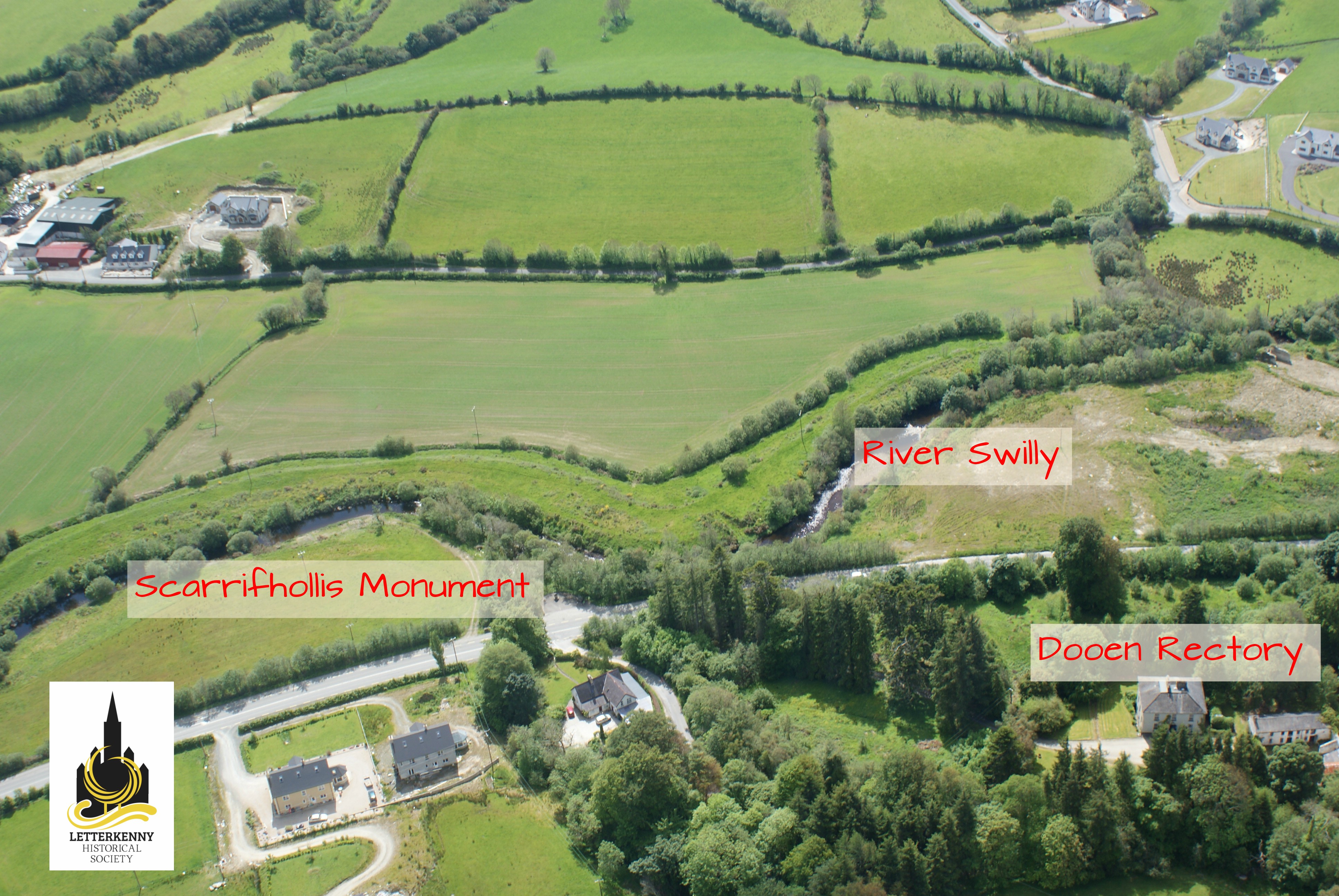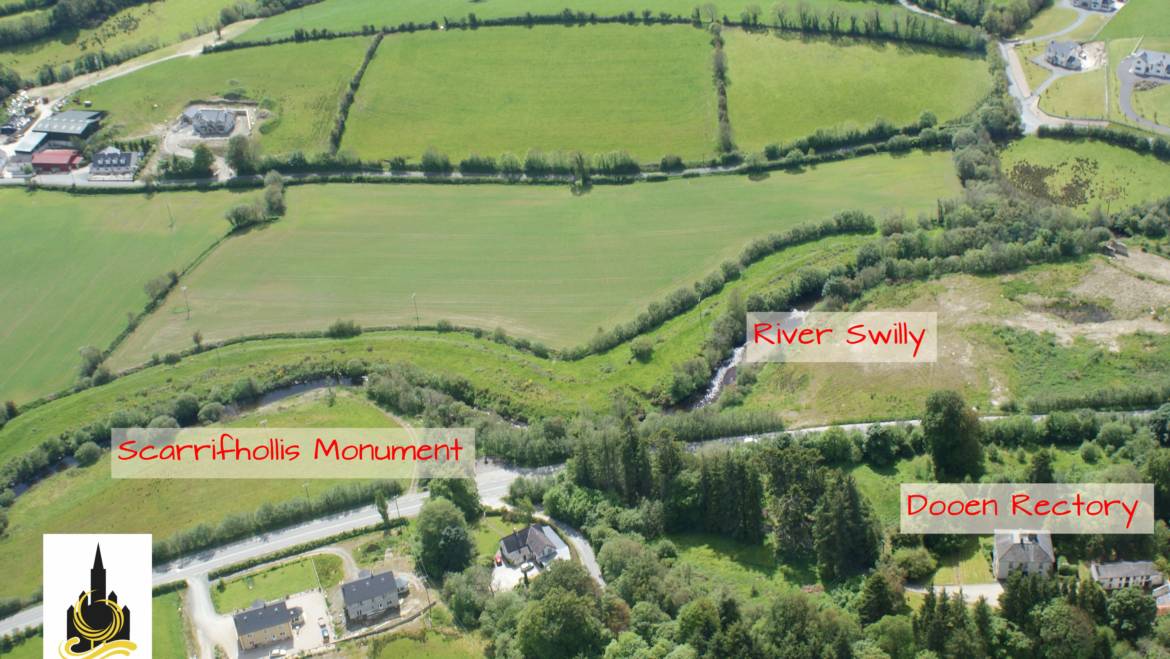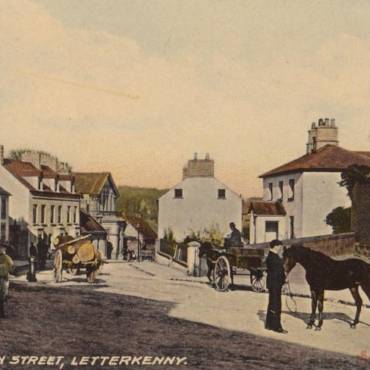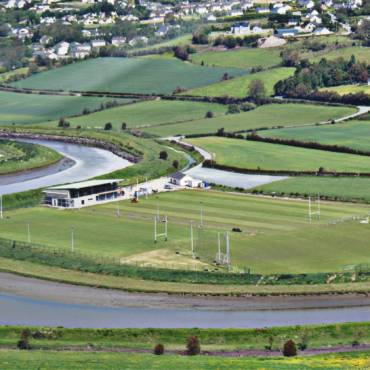The Battle of Scarrifhollis – June 1650
The River Swilly was no stranger to brutal and bloody battles throughout its history, Godfrey O’Donnell in 1258 and Shane O’Neill in 1567 (which we read about in the last post) saw to that. Another major battle took place in 1650, to the west of the still young town of Letterkenny at Scarrifhollis, near to the village of Newmills today. To understand why this battle took place, we must first examine the build up to it and the tense atmosphere that existed in the recently planted province of Ulster. Following the Plantation, religious tension had been growing steadily with resentment from the Catholic Irish towards the new Protestant settlers intensifying since their arrival from 1609 onwards.
By 1641, this long pent up resentment of the native Irish against the new planters exploded throughout the province. Filled with an insatiable lust for revenge and infused with a religious fervour, the natives plundered town after town throughout the province. Eoghan Rua O’Neill returned to Ireland in 1642 to aid this Irish rebellion. Seeing this as an opportunity to reverse the Plantation of Ulster, he instigated a highly trained and organised offensive against the English crown in Ireland.
Coinciding with the outbreak of the Civil War in England, leading members of the Catholic hierarchy met in Kilkenny seeking to capitalise on the confusion in England and restore order in Ireland. They formed the Confederation of Kilkenny, which acted as the de factogovernment of Ireland controlling almost the entire island. In January 1649, the Confederacy signed a treaty with the English Royalists but two weeks later, the king was beheaded and the victor in the English Civil War, Oliver Cromwell, could now turn his attention towards Ireland.
Still mindful of exaggerated tales of the 1641 massacres against the settlers in Ulster, Cromwell made no secret of his primary motive of vengeance against the native Irish. Ruthlessly taking the walled town of Drogheda after a short siege in 1649, tales of Cromwell’s barbarous slaughter of the Irish are well recorded.
Eoghan Rua O’Neill died in November 1649, thus leaving the Ulster Army leaderless. Despite his lack of military experience the young and dynamic clergyman Bishop Heber MacMahon was chosen as Eoghan Rua’s successor. MacMahon led the Ulster Army into the town of Letterkenny in June 1650 with the Parliamentarians, under the leadership of Sir Charles Coote following them.
Rather than engage with the Parliamentarians in the town though, MacMahon chose the more defensive higher ground of nearby Dooen, near the crossing at Scariffhollis, to wait for their arrival. The terrain of this area suited this defensive stance, being rocky and inaccessible to horses. MacMahon, however, then made a fatal mistake by allowing Col. McSwiney and 1,300 men to march on Doe Castle to secure the fort, depleting his numbers considerably as a result.
And so it was that in the summer of 1650, the opposing forces of the Royalist/Confederate army under Bishop Heber MacMahon and the Parliamentary forces of Sir Charles Coote stood on either side of the shallow ford of Scarrifhollis ready to engage in battle. On the 20th of June, MacMahon could see Coote’s army on the opposite side of the river near Crieve/Rockhill. The Laggan Army had joined forces with the Parliamentarians and Coote’s army now held approximately 3,000 infantry and 800 horses, outnumbering MacMahon’s 2,600 and 400. On the morning of the 21stJune 1650, Bishop MacMahon, against the advice of his generals, moved from his defensive position on the hill of Dooen and engaged Coote’s army on the flat lands around the river.
After about an hour of engagement, the Parliamentary forces utterly routed the Ulster Army. In the mayhem and panic that followed, many of McMahon’s army drowned in the river or were trapped in the silt of the tidal banks thus making them easy targets for ruthless execution. By sunset, the rout was complete. Bishop MacMahon escaped however and made his way to Enniskillen but was captured and beheaded six months later with his head being displayed on a pike at Derry’s gates. After this resounding defeat, the Ulster Army had been obliterated and the re-conquest of the northwest by Cromwell’s army was complete. Today in the town of Letterkenny, the estate of MacMahon Villas on the New Line Road is named after the defeated Bishop while at Scarrifhollis a monument to the battle stands, erected in the year 2000 to mark the 350th anniversary.




